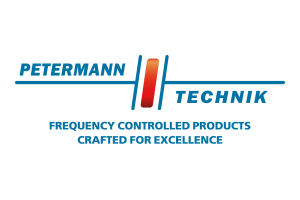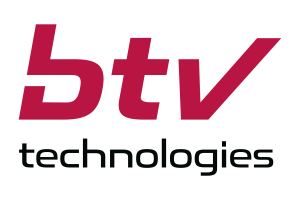Gregg Lowe, CEO of Cree and Wolfspeed
“Wolfspeed is no more our Ugly Duckling”
Fortsetzung des Artikels von Teil 2
Growth in silicon carbide limited by the number of raw wafers
Since recently silicon carbide was a game for companies who have their own fabs. This is very different with GaN where a fabless model is quite common. Now X-FAB came out with a foundry model for silicon carbide. Do you think this will change the game as fabless semiconductor companies have now the possibility to produce their own SiC devices?
I think the most important right now is the material supply with silicon carbide raw wafers. This has to increase substantially as we are reaching the tipping point of the demand. Therefore we have doubled our capacity the past year, we will double it again next year. We will spend roughly 200 million dollars of capex for growing the business. And we will continue doing so.
Now let me answer your question on a foundry model for silicon carbide. With digital CMOS the foundry model became prevalent due to the cost of wafer fabs. An advanced digital CMOS fab is very capital intensive and costs multi-billions of dollars. If you look now at power semiconductor manufacturers like Infineon, ON Semiconductor or STMicroelectronics, most of them have their own fabs, because it’s much less capital intensive. So the success of a foundry model for silicon carbide will be based on the capital intensity of that industry. But for the next years the growth of the silicon carbide business will be driven mainly by the growth of the substrate business which is part of our strategy.
Is this growth in capacity coming from increasing the number of raw wafers or from migrating from 4 inch wafers to 6 inch wafers?
It’s actually both. We have increased and will increase the number of raw wafers produced, and on top of that the wafer area is increased by migrating to larger wafer diameters. All the new crystal growth is done on 6 inch.
In March 2018 you also signed a long-term agreement with Infineon to supply them with 6 inch silicon carbide raw wafers. Can you disclose more details of that agreement, it’s timeframe for example?
Well, I cannot disclose the details. We publicly said that this supply agreement is valued at well over 100 million Dollars. And now let me put this into perspective: The whole Wolfspeed revenue was some 220 million in 2017, and roughly a third of that was the material business. So you see this agreement is very substantial to us. It assures us revenue for a good amount of time, and it assures Infineon the supply of raw wafers for the same period of time.
You are still manufacturing only planar SiC MOSFETs while competitors like Rohm and Infineon are offering trench SiC MOSFETs. When will we see the first trench SiC MOSFETs from Wolfspeed?
We are definitely working on our own trench technology, but what really matters today is performance and price. We have the lowest on-resistance in the industry with planar technology and a competitive price. If needed, and this time will come, we will switch to trench, but I think this won’t happen in the near-term future.
Jeff Casady, business development manager at Wolfspeed, said in October 2015 that the company has SiC IGBTs in the lab. When will you present the first commercially available SiC IGBTs?
Our technology reaches all the way from 600 volts up to 25 kV. Commercially available are just the SiC MOSFET devices up to 1700 volts with a clear focus on 1200 volts. What silicon carbide IGBTs can do on an application level is incredible, but they are targeted at much, much higher voltages, greater than 10 kV. We have industry partners we are working with, but silicon carbide IGBTs are still very much an R&D project and will not be commercially available in the near future.
Why are you going after SiC IGBTs?
The application areas for these very high voltage devices would be mostly related to “grid tied” inverters for alternative energy, as well as other grid level power management applications and HVDC power transmission. With silicon carbide MOSFETs you can go up to 10 kV blocking voltage. With silicon carbide IGBTs we can address blocking voltages well beyond 10 kV, with the potential for all the way up to 30 kV. It is similar as with silicon: Silicon MOSFETs end at around 800 to 900 volts, beyond that you need silicon IGBTs.
… or silicon carbide MOSFETs.
Exactly! I think, if we had silicon carbide MOSFETs in the 1980s, there had been no need for silicon IGBTs.
Wolfspeed is specialized on SiC for power and on GaN for RF. Do you have any plans to offer GaN for power?
Let it put me this way: We have a tremendous opportunity right now in silicon carbide for power electronics. So we are focusing on growing and expanding that business. The fact that we are also manufacturing GaN for RF power is great. We get a lot of know-how and we already have a lot of intellectual property in GaN. Having GaN for power as an option in the future is great, but right now we have to concentrate on our silicon carbide activities for power and our GaN activities for RF.
At the end I have a personal question to you, Gregg. After leaving Freescale and before joining Cree you took some 2 years off. I read that you wanted to learn playing guitar. Did you do so?
I always accomplish what I want to do. Yes, I learned playing guitar.
Gregg, many thanks for taking the time.
This interview was conducted by Ralf Higgelke.
- “Wolfspeed is no more our Ugly Duckling”
- "Our Challenges at Lighting are self-inflicted."
- Growth in silicon carbide limited by the number of raw wafers









